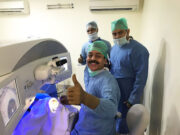Any issues need to be fixed before moving forward with deployment. You’ll also need to manage how the system will integrate into existing systems, software, and processes. As part of their embrace of this methodology, many teams also apply an Agile framework known as Scrum to help structure more complex development projects. Scrum teams work in sprints, which usually last two to four weeks, to complete assigned tasks. Daily Scrum meetings help the whole team monitor progress throughout the project.
So, there is nothing wrong if you share what you have learned in the
previous projects and encourage stakeholders to learn and adapt better ways as
well. In this stage, you should do all the testing required in your system
to ensure that all of the moving parts are working well. In this phase, you have to do everything you have discussed in all
the above phases for a long time.
Stage 1: Plan and brainstorm.
Baselines[clarification needed] are established after four of the five phases of the SDLC, and are critical to the iterative nature of the model.[21] Baselines become milestones. This procedure where the care is taken for the developed product is known as maintenance. During this stage, unit testing, integration testing, system testing, acceptance testing are done. Once the required function is done, an analysis is complete with auditing the feasibility of the growth of a product. In case of any ambiguity, a signal is set up for further discussion.
- Rapid prototyping is also ideal for projects requiring a high degree of user involvement, since it encourages stakeholders and end users to participate early and in the development process.
- Throwaway prototyping involves building software that can be discarded or eventually made part of the original software.
- In this phase, everyone knows in your team as
what they need to do and how. - People who are going to use the
system on a daily basis will provide genuine feedback on whether there is a
chance for improvement or there is no issue. - Each phase of the project involves business modeling, analysis and design, implementation, testing, and deployment.
- Cloud computing is one example where trust and trustworthiness39 between cloud service providers (CSPs) and a federal agency is critical for the effective application of the NIST RMF.
And the ScrumMaster is tasked with keeping the team focused on its goal. The Agile model has existed for a long time, and still hasn’t lost its punch. Lately, the model is widely adopted by organisations, and it is proven to be quite the driving force behind software development.
System Development Life Cycle Phases (SDLC)
Application performance monitoring (APM) tools can be used in a development, QA, and production environment. This keeps everyone using the same toolset across the entire development lifecycle. After training, systems engineers and developers transition the system to its production environment. Design documents typically include functional hierarchy diagrams, screen layouts, business rules, process diagrams, pseudo-code, and a complete data model with a data dictionary.
So, you need to choose the one which meets your unique project needs. The proper application of the process and adherence to it plays a vital role in
the success of a project. It is usually the best way to explore new technology
or make a small prototype to keep track of feasibility. Reviews are known to be very effective and a lot more affordable to
detect any defects.
Phase 2: planning and requirements
Developers create a version very quickly and for relatively little cost, then test and improve it through rapid and successive versions. One big disadvantage here is that it can eat up resources fast if left unchecked. In other words, the team should determine the feasibility of the project and how they can implement the project successfully with the lowest risk in mind. ” This stage of the SDLC means getting input from all stakeholders, including customers, salespeople, industry experts, and programmers.

Below you will find sequential steps to SDLC, but each company will vary in their process. The Software Development Life Cycle (SDLC) is a software development process which includes delivering software which consists of a detailed process of development, maintenance, alterations, and others. It involves several different stages like design, planning, testing, development, and deployment. SDLC methodologies fit within a flexibility spectrum ranging from agile to iterative to sequential.
Lean
Like other data-related projects, the activities in the analysis phase should include profiling the data in the source and target data structures. The requirements phase should include verifying that the assumptions made are true by trying the load of very small amounts of data. There is a lot of literature on specific systems development life cycle (SDLC) methodologies, tools, and applications for successful system deployment. Not just limited to purely technical activities, SDLC involves process and procedure development, change management, identifying user experiences, policy/procedure development, user impact, and proper security procedures. Books such as David Avison and Guy Fitzgerald’s Information Systems Development and Alan Daniels and Don Yeates’ Basic Systems Analysis, delve into the intricacies of information systems development lifecycles. This article will provide an in-depth analysis of the history, definition, phases, benefits, and disadvantages, along with solutions that support the system development life cycle.

Developing a new customer relationship management (CRM) system for a sales organization is an example of a project that can use the V Model. Once you’ve completed all testing phases, it’s time to deploy your new application for customers to use. After deployment, the launch may involve marketing your new product or service so people know about its existence. If the software is in-house, it may mean implementing the change management process to ensure user training and acceptance. This stage involves deploying the developed system into the production environment. This includes activities such as system installation, data migration, training end-users, and configuring necessary infrastructure.
What is System Development Life Cycle (SDLC)? The theory
The total of the seven phases are visualized and described below. In the 1960s, mainframe computers hit the consumer market, and living rooms came to be filled with large systems. Lack of design since changes are being put in the system might unknowingly affect other parts of the system. Easier to trace a problem in the system to its root whenever errors are found, even after the project is completed.

Several pitfalls can turn an SDLC implementation into more of a roadblock to development than a tool that helps us. Failure to take into account the needs of customers and all users and stakeholders can result in a poor understanding of the system requirements at the outset. The benefits of SDLC only exist if the plan is followed faithfully. System assessments are conducted in order to correct deficiencies and adapt the system for continued improvement. During this stage of the system lifecycle, subsystems that perform the desired system functions are designed and specified in compliance with the system specification.
Stage 1: Plan
As the SDLC is a repetitive methodology, you have to ensure code quality at every cycle. Many organizations tend to spend few efforts on testing while a stronger focus on testing can save them a lot of rework, time, and money. This step involves decomposing the system into pieces, analyzing project goals, breaking down what needs to be created, system development life cycle principles and engaging users to define requirements. Object-oriented analysis and design (OOAD) is the process of analyzing a problem domain to develop a conceptual model that can then be used to guide development. During the analysis phase, a programmer develops written requirements and a formal vision document via interviews with stakeholders.

































